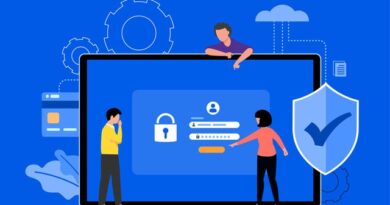Critical Challenges to DevSecOps Security and How to Mitigate Them
Table of Contents
Despite the many benefits of DevSecOps, organizations face several key challenges when trying to implement security practices. These challenges can block or slow down the progress of DevOps adoption and impact the safety and security of applications and data.
The following article will look at some of the critical challenges to DevSecOps security and discuss ways to mitigate them.
Challenge 1: Lack of Security Awareness Among Developers
One of the biggest challenges to implementing DevSecOps is developers’ lack of security awareness.
Many developers are not familiar with the principles of secure coding and how to write code that is resistant to attacks. As a result, they may inadvertently introduce vulnerabilities into applications.
One way to address this challenge is to provide developers with security training and education.
Security awareness programs can help developers learn about the possible types of attacks, how to identify and mitigate security risks, and best practices for writing secure code.
Challenge 2: Lack of Integration Between Development and Operations Teams
Many organizations lack integration between the development and operations teams. Often, development and operations teams have different priorities, workflows, and timeframes. As a result, security is often put on the back burner until some crisis requires its attention.
One way to overcome the problem is through DevSecOps.
By integrating security into the development process, organizations can ensure security is given the same priority as other aspects of the application.
Development and operations teams can work together to identify and address security risks early on in the development cycle before they have a chance to cause damage.
Challenge 3: Lack of Resources
Implementing DevSecOps requires time, money, and resources. Organizations often lack the time, money, and expertise to create a solid DevSecOps program.
One way to manage the challenge is by assessing current security capabilities before embarking on any kind of DevSecOps initiative.
An organization can use this assessment to determine its level of preparedness for DevSecOps and identify the areas that need improvement. It can also help identify the necessary resources (time, money, personnel) needed to implement a successful DevSecOps security program.
Challenge 4: Lack of Automation
Automating the security process can be a challenge for many organizations.
Security processes often involve manual tasks that are time-consuming and prone to error. Automating these tasks can help speed up the process and reduce the chances of human error.
One method to address this challenge is using security automation tools. Security automation tools can help automate identifying, mitigating, and responding to security risks.
They can also help automate the process of testing and deploying secure code. Security automation tools can help reduce the amount of time and effort required for DevSecOps while speeding up the security process in general.
Challenge 5: Lack of Centralized Data Collection
Centralizing data collection is another challenge that organizations face when implementing DevSecOps. Without centralized data collection, it isn’t easy to get a holistic view of the organization’s security posture.
There is one way to address this challenge. It uses a Security Information and Event Management (SIEM) system. A SIEM system can help collect data from various sources and provide a centralized view of the organization’s security posture. It can help organizations identify and address security risks much more quickly.
Challenge 6: Lack of Cloud Security Expertise
According to studies, around 60 percent of development teams have embedded DevSecOps practices in 2021.
Implementing DevSecOps in a cloud environment can present particular challenges. For instance, organizations often lack the security expertise required to implement DevSecOps successfully in a cloud environment.
Without this expertise, organizations may not fully utilize the benefits that the cloud has to offer.
You have one way to address this challenge. It is by working with a cloud security platform. A cloud security platform can provide security expertise and assistance to help organizations implement DevSecOps in a cloud environment. It can also help automate many of the security tasks required for a successful DevSecOps implementation.
Challenge 7: Lack of Standards
The lack of standards is another challenge that organizations face when implementing DevSecOps. Without these standards, it can be difficult for organizations to ensure that their security needs are being addressed.
One way to address this challenge is by creating an industry standard. If an organization starts developing its own set of best practices, it can help itself and raise awareness among other companies about the benefits of DevSecOps.
It can help encourage the development of industry-wide standards for DevSecOps. These challenges do not need to hinder an organization’s progress towards implementing DevSecOps. By identifying the challenges they face, organizations can work on creating solutions for these problems.




